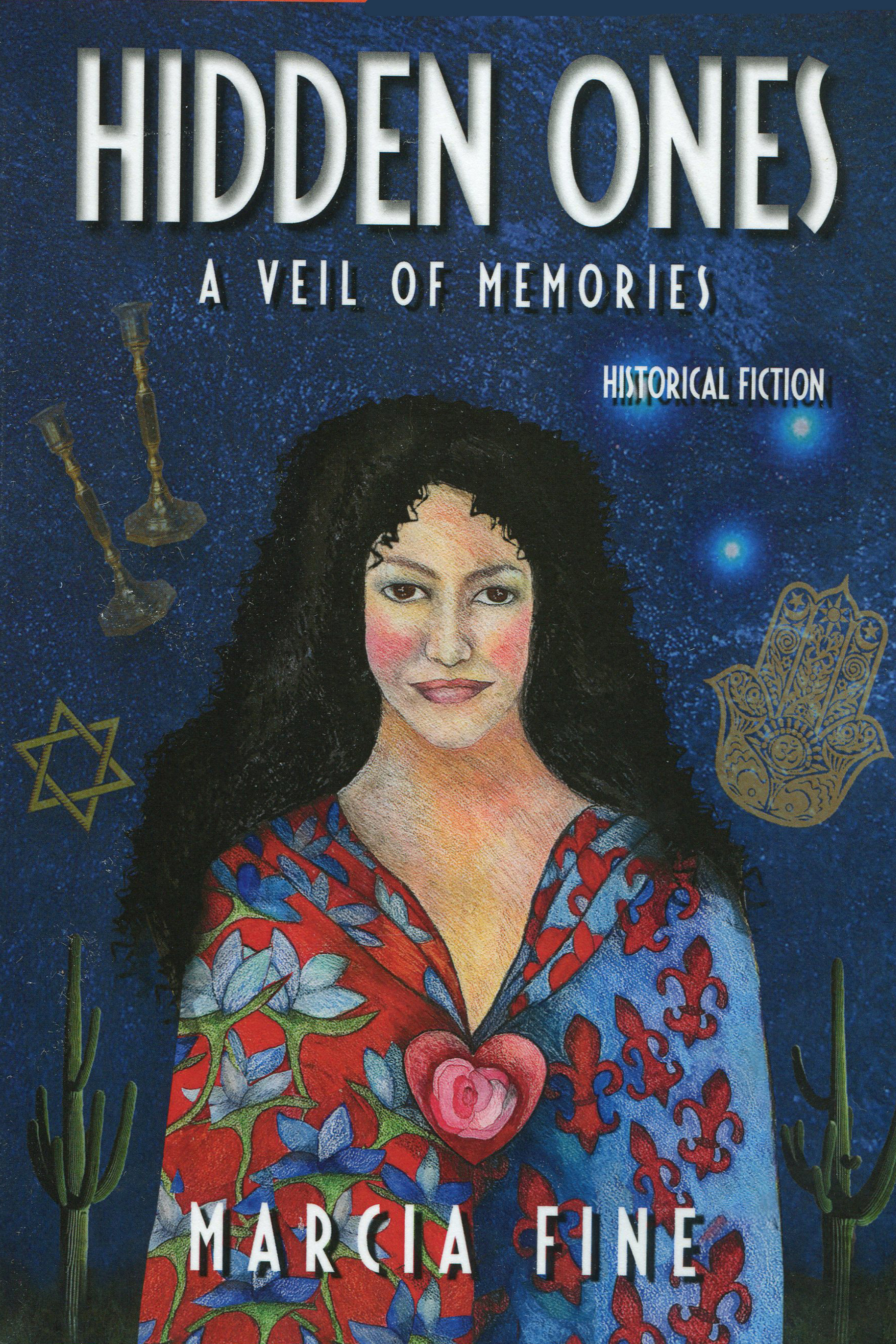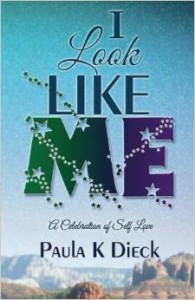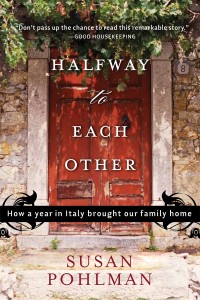SWIM WITH THE SHARKS
Patricia L. Brooks, Book Reviewer May, 2019
Henry Zguda’s life comes to light in this compelling book by Katrina Shawver, a former journalist, now biographer. Zguda’s years passing through the horrible concentration camps of the Hitler Regime before and during World War II are chronicled in this superior book that covers a significant part of world history. Shawver writes about Henry’s great resolve as he maneuver’s his way through the system put in place by the Germans. He learns to find his way in varying jobs and by befriending the right people that make him important enough to be kept alive for their use.
Shawver has done extensive research on this era, including travel to the camps. This writing is a great service to all those wanting to know more about the atrocities of the holocaust and the Nazi era, and what the Jews and other captives experienced from one who survived it first-hand. In their many conversations, Henry and Katrina relive for us countless stories of the deaths and senseless acts of torture in the camps by the guards of Auschwitz I and II, as well as the ironies of it all.
This is no easy read, but a read worth seizing for the attention to detail of a story that honors the life of a man of Polish decent who once swam for his country and fought his way out of a Nazi camp. Although he was not a Jew, he lived amongst the Jews as they did in the camps to be here to tell their stories too. Thank you to Henry Zguda and Katrina Shriver for this effort. My husband Earl and I recommend this book for its historical value and biographical excellence.
in the camps to be here to tell their stories too. Thank you to Henry Zguda and Katrina Shriver for this effort. My husband Earl and I recommend this book for its historical value and biographical excellence.
Better Than Me – three generations of inner strength/Albert Monreal Quihuis
 BETTER THAN ME
BETTER THAN ME
Patricia L. Brooks, Reviewer
May 5, 2019
Veronica was considerably more than simply a Mexican immigrant. She was, to be sure, a crackerjack youngest daughter of her self-sacrificing mother and wise grandmother. She was a fierce leader as a young woman fighting against her naysayers both in Mexico and later after crossing to the United States.
A girl in search of herself leaves her childhood village, a close-knit agricultural community, for a nearby US ‘border town’ where she moves between her high school 30 miles away and Lukeville, the place she calls home with her mother.
Her complicated status, though sometimes over looked, was well understood by an occasional mentor or teacher. Veronica resurrected her saga of a remarkable young woman with persistence honed early on by her battle to learn English, to conquer her dialect and to be accepted for who she was as a new US Citizen.
She fights against low gender expectations as well as those forced on a Mexican immigrant. But she perseveres. Her dramatic struggles to understand her mother’s decisions, her grandmother’s grief and the abandonment of her father and mother at a critical time in her young life bring into focus what she wants out of life.
As a young woman who begins her life in the US speaking no English, she comes to terms with her role as a front-runner as she stands up to bullying. This is a biography of three strong Latina women, both living in Mexico and immigrating to the US, while supporting each other and learning from their lives.
The research by Quihuis is thorough and ably places Veronica in the context of her times so the reader feels apart of the story. This intriguing account of the women endangering their lives for a better life, generation after generation is on display with Veronica in a starring role. Nothing seems to interfere with her desire to make more of her life.
By a variety of means, Quihuis shows us well the path to naturalization for this extraordinary woman, her mother and her family. Clearly this was a young woman on a mission.
Although at times, a decided lack of opportunity prevails, she is the real deal, always chasing a makeover that takes her forward to naturalization and the freedom she desires for herself.
Quihuis meditates on life and family relationships, horrific loss and sadness. He reveals abuse of the immigration system and offers a new view on justice. The book explores race and gender and disillusionment in working class America. Quihuis has become a powerful voice as a Latina writer.
Born into poverty, Veronica re-evaluates her relationship to her country after her move to the US. While Quihuis cleverly alternates the narration of three generations of Mexican women with their earlier lives and their current predicament.
Veronica sees her sister’s fairytale marriage open many doors for her and her mother too, both physically and psychologically. She knows the family curses of poverty and grief and is determined to beat the struggle. By discounting her US life’s connection to her homeland’s past and present, she encounters new friends in the US and a new way of living she could never have anticipated.
Although at times I wanted a more in depth look at this life, I knew it could not be told if a younger audience was going to read this book. But do not be mistaken, this is a compelling true story of pride and determination. It is a story I recommend to young adults, and older adults, and especially to those who want to understand the struggle of the Mexicans desiring for a better life against incredible odds.
Hidden Ones by Marcia Fine
The Jews You May Not Know
Herman Melville observed ‘to write a mighty book you must choose a mighty theme’ and that is what we have with Marcia Fine’s Hidden Ones (L ’Image Press, 2017).
In the world of historical fiction, Marcia Fine is a multi-award-winning author of inspiring first-rate commentary on Jewish history. She has seven novels to her name, but her latest book Hidden Ones shows the reader she is at the top of her game.
She has combined history, fiction, romance and intrigue with the contagious enthusiasm of a researcher who has discovered gold, and in my opinion, she has done just that with Hidden Ones. Her richly researched and sympathetic portrait of controversial Jewish figures disguised as Catholics in Mexico, along with the dramatic stories of the Inquisition in Mexico in the mid 1600’s comes along at a beleaguered period in Mexican history. Where brutality against those Judaizing reaches a dangerous and volatile significance, Fine begins to write.
The Jews living in Mexico during this period refused to not be Jewish. Although working daily to not enrage the church or show their identity, they maintained their pride and dignity. Their courageous resistance in and out of prison was defiant but hard for the church to prove. They believed they did not have to be what the Church wanted them to be, they just had to exist within it and around it, never revealing their identity. They were too fast in their actions to be caught by those who came by to check on them. They were always prepared for a search.
The story rocks back and forth between the strong grandmother imprisoned during most of the book and the impressionable granddaughter, imprisoned for a short time. Heroically, these two women carry the story as life moves from marriage to childbirth, and from death to heartache. Life for them is usually in chaos with the Church’s eye always on the suspected Jews.
While front and center, this Jewish family stands for peace and unity, love, equality, and justice at the very least. Often risking everything for what they believe, they know who they are.
This work is likely to be controversial with the author’s portrayal of the Inquisition in Mexico and the Catholic Church at that time, but be assured, her research is solid, and easily documented, despite showing the dark side of Catholicism. She teaches us much about orthodox Jews and their faith with the rituals and celebrations they adhere to in this dire situation. There are surprises and plenty of suspense when the Jews are confronted, but the story remains true to their destiny.
The book is an epic tale of Jewish and Mexican history most people are unaware of but will find intriguing. Much in the pages will be familiar if you have some knowledge of the Jewish culture, but even the familiar may be glimpsed from a different perspective when you factor in the Mexican culture, the Catholic Church and the Inquisition in Mexico in the 1600’s.
Fine’s fluent prose makes this a page turner, it’s narrative reads like a double-novel with two strong women as protagonists. It’s a suspenseful tale with a cast of vivid characters in three generations, plus other family members needed to fulfill the story. These characters prevail throughout the years and help define a brilliantly innovative young woman with the goal for her life of seeking the fairy tale of meeting her prince charming despite incredible odds.
On a triumphant note, Fine believes her main characters, transcend their culture. She never white-washes their life, but shows us how they overcome prejudices and face down their accusers. These courageous Jews generously gave us this important history, so it could be found, written about, and read about centuries later.
Fine presents a series of interlinking stories in a structural decision that allows her characters to inhabit their own narrative and give accent to the lives they intersect with, including and the others they run parallel with too. These connections to Jews and Mexicans are close and clear as the story progresses. Fine allows us to see whose actions directly lead to more action before pivoting us to another scene.
This novel is divided into four parts. Taking us though many years of a family history; younger days; entanglements, schemes, happy times, mystery, prison, death and rejoicing. Her narrative technique takes us though the relationships of family and friends, commencing with stories that pull us further and further from where we started and where we expected to go.
After passing through all these stories of family history and appreciating Fine’s fight to preserve their legacy, I came to appreciate a novel of excellence in storytelling extensive research. It was a huge pleasure to finish this book. This work enlightened me to Fine’s sincere and engaging journey into historical fiction. She wrote with a rare insight into Jewish heroines I would never find in history books. It’s been quite a revelation to read her story of Jews hiding in Mexico during the Inquisition.
ONCE UPON A TIME THERE WAS A LOST, GAY LITTLE BOY
In her biographical debut, Once Upon a Time There was a Lost, Gay Little Boy, Jo Gabriel warns us that this writer is vulnerable, open to attack, and easily smeared repeatedly. She has written this story from everywhere, but maybe in your world, nowhere. The story begins with a chaotic childhood, followed by an unhappy home-life with husbands she believes taught her hard lessons. Eventually escaping to a new country, Gabriel’s captivating biography confirms she’s far more invincible, not a heroine or a hero, but a sympathetic figure.
Jo was born into a bi-racial family in Europe to an American white man, who stayed there after military duty, and a Spanish woman born in Spain. She demonstrates early her misfit position in that family by not following the footsteps of her taller and prettier sister. She overcomes a horrific childhood of abuse at both the hands of her father and her mother as neither tries to protect her from the other, or from other family members.
Living abroad for many of us would be exciting, but for one who has memories of abuse, assault and cruelty on several levels, it’s far from it. And that is the gist of this story.
Despite her rising above adversity, she’s self-destructive. She moves many times during her younger life due to her father’s decisions, drugs and prostitution, and life on the street. Her relationships are uneasy with her peers in her early years, but she perseveres and begins to find herself. Educating herself as a tool to make her life better.
In her story telling, Jo in no way romanticizes her life. There is no moral redemption in her transformation to a ‘religious person,’ a wife or a mother. She has a lot of trauma to work through that amplified her initial suffering at the hands of her parents. She begins to conceal her desires for same-sex relationships, and more importantly, to be a boy, while moving forward in life as a wife and mother.
Jo has much psychological torment from her past, but even more with her self-identity in the present moment. Her career paths and her drive for an education establish her as a full-fledged success in her field of choice, education.
Several intimate partnerships are revealed to give the reader insight into her life beyond her work as a dedicated, hardworking professional. Jo’s life continues to be replete with episodes of abuse and misbehavior almost to the point of frustrating the reader, yet being so necessary to tell the story.
Haunted by her past, her mistakes and failures, she leaves Spain with her four children and vows to never return. Her words mirror her shrewd cynicism about relationships and family. She spells tragedy on the page as a catharsis, not to entertain us. It’s a raw account of a life, not necessarily optimistic, but certainly realistic. She takes the plunge to move to the United States, and leave her heartache and homeland behind in a quest to find who she is and what she will become.
This author is an inspiration to victims. This biography does not suffer with its structure of vignettes and honest presentation. The reader will learn about an unfamiliar life.
Jo has many stories to tell that rumble around in her head, but life with four children and a heart that says, “I’m living in somebody else’s body” make that complicated. She takes the plunge with love and experiments after two failed marriages. The virgin love relationship she seeks is with a lesbian. Her hope is to feel free at last and truly discover who she is, but it’s not that easy.
She tries a change of scenery with various moves, from the energy of a bustling city to the countryside, but still feels unsatisfied within herself. She tries to take advantage of her free time, as her children get older and she matures, to pick the perfect wife for her. The change of scenery often provides a new perspective for a while, but it’s not the answer. She still feels a need to escape the life most women know. Even though she loves motherhood and works hard to be there for her children, she’s out of touch.
Feeling overwhelmed and lonely, after many years with husbands who were abusive or not right for her, she looks at her sexuality from another angle, that of a boy not a girl. Although she had no specific plan, she began researching sex change and all it entailed. She was directed by a medical professional on where to go and what to do. She found many road blocks, including her own physical and mental conditi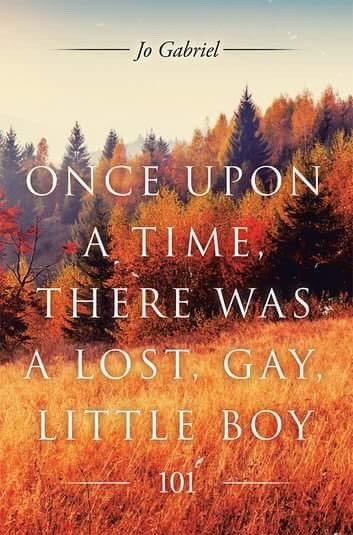 on.
on.
Having always been frugal, especially after living in the street, she began to plan financially how to handle transformation and how that would take place. She always believed being frugal was a way to her longevity, her survival, often living below her means. She had a good hard-earned education, and worked diligently to maintain her professional career that had not come easily.
Her ‘good’ life did not happen overnight. Though she had known career success, and had been a good provider for her children, she emphasizes the trial and error involved in getting there. The sacrifice, the disappointments. Her life had not been easy, in fact it was quite difficult. This transformation process was going to be extremely difficult with a lot of new challenges, but it was what she desperately wanted.
She became conscientious of the life as a trans-person, feeling an obligation to learn as much as she could about what her new life would entail. She vowed to be sensitive to those who came before her. She attempted to forge some connections in the trans-gender world while still maintaining an on again-off again relationship with a lesbian. She didn’t seek much advice from others who had been in her shoes, and thus she fell into some harrowing situations.
With surviving child abuse by a relative in her early life, an eating disorder for decades, and being abused by her husband, Jo developed her own ways to counteract the abuse in her lesbian relationship that was also an isolated life. She too often saw her life as normal even though the underpinning of normalcy and routine were far from the door.
As you read this courageous portrayal of a fragile child maturing too quickly, you ask yourself what stops people from taking a suicidal leap in these situations. Or what stops them from quitting on everyone they know or from giving up and going to the streets to hide? We know you can rarely go back, undo, rework, and that we must progress and grow, mature and find answers. This book shows us that fortitude.
Living Life After Losing One: Alice Rampton and Nikki King
AN UNCONVENTIONAL LOOK AT GRIEF
In their non-fiction book, Living Life after Losing One (Cedar Fork), Oregon mother of seven, Alice Rampton, and her friend Nikki King, mother of five, joined forces to take on the daunting task of looking at their grief in an unconventional approach.
Contrary to a common belief that grieving is something you do and get through; these women show us great strength. Grief, as a process for the rest of your life, is what we see in their writing; it becomes more bearable, and your emotions are not as intense.
Grief occurs in all lives, and in many ways. Rampton and King’s book focuses on the grief of one child lost to cancer and another one to a car accident, as well as a myriad of other possibilities with additional interviews. They believe that grief does not have to destroy a family or a relationship, but that trauma can give new life and new meaning to families in different ways.
Just as a broken bone that has healed is often stronger than the original, similarly the heart has the capacity to grow stronger from grief. Nowhere is that demonstrated more clearly than with these two women and their friends. While dealing with their relationships under incredible stress, they now know a personal strength they did not recognize previously.
In this work, Rampton and King discuss the roots of grief, the triggers, the ways of coping with it, the process and stages of grief taken on your grief journey, and the secrets to maintaining a healthy healing. Grief is so common and so poorly understood, and yet it was a motivator for them to interview a group of other mothers with the same loss experience, both anticipated or unforeseen.
To look at a new perspective on grief and to choose their futures, all the women speaking to us in the book sought to be alive again. Each one, in their own way, resorted to leaving the constraints of grief to support each other and to give and receive kindness and joy.
They eventually felt free from the restraints of grief and understood they had the right to be happy, to move on, to be optimistic. They began to give themselves, and each other permission to be more than their loss situation.
Grief is a powerful alarm system for all members of a family. The siblings are also studied in the storytelling. Once the women dealt with the acute pain of the loss, of a future without their child, they looked more realistically at where their lives were going.
They each acknowledged the hurt, the guilt, and the mistrust, and began to live again. They found new meaning in all of it by asking questions of themselves and the others who share this unique bond of being the parent who’s lost a child.
What was this all about? What’s the insight? Why did this happen?
Conclusion: Grief isn’t black and white.
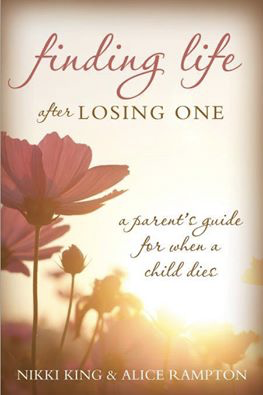
A Change of Habit – by Patty Kogutek (Sister Mary Kateri)
A Change of Habit Patty Kogutek, author www.pattykogutek.com
Book Reviewer: Patricia L. Brooks www.plbrooks.com
Author Patty Kogutek is torn between her life in marriage to God, and being away from her family. She’s lonely and often questions her decision. At times the story is funny, other times it skates close to stereotypical, but it is never dry or boring. Even while allowed to teach young children at a school near the convent, Sister Mary Kateri finds a lack of intimacy in her life. She seeks God, the church and others in the convent again and again for answers. Patty shows us well the struggles and frustrations of all she’s asked to endure and accept, as if a caged dove. We walk with her in those dark moments of yearning for peace in her new life to those special moments of commitment to the convent. The habit in this memoir’s title is a symbol of the personal guilt and grief endured by Patty during her impressionable years. It is both the black wool habit a young teenage nun wears in the 1960’s that evolves to the less confining habit after a Vatican II upheaval in the Catholic Church of the 1970’s. This piece of clothing that adorns her in the convent is fraught with pain and loss. It comes to symbolize all she has hoped to leave behind in the secular world. It makes itself almost unfit for a dynamic young woman’s naïve and humble beginnings before God. Does she want it any other way? Is it too late for her to change her mind and go back to her other life? Can she even make that decision without being engulfed in guilt? Her convent life is an interesting backstory to her change of habits and interests, and yet the story is so much more.
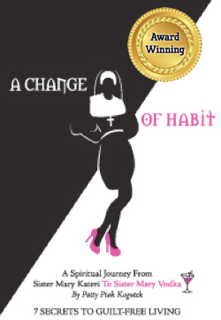
The Change of Habit is almost beside the point as we witness this metaphor unfold in her tremendous drive and determination to heal and grow into the person she was meant to be. Her fans will support her and she will endear her fans to her. Her lack of true intimacy in the past is addressed for the reader. Her mindless devotion to the church and all its rules and need for control are offered but not hammered relentlessly. She explores alternatives for her life and shares them with us. Her important insights will influence even the staunchest Catholics. This book is thought provoking and at times fun to read. The details are delightful; the emotional rollercoaster is worth the ride. Some readers may yearn for a little less naivety and a little more depth, but Patty will not disappoint them as she takes them on her journey of hope. This reader found the story respectful of the women who serve God as a nun. You be the judge as God is their judge. Respectfully submitted, Patricia L. Brooks, author, publishing consultant www.brooksgoldmannpublishing.com
Book Review – I Look Like Me
Author: Paula Dieck www.ILookLikeMe.com
Book Reviewer: Patricia L. Brooks, Author and Publishing Consultant
I Look Like Me is the story of an idealistic childhood in the Midwest. A loving family. A father and his little girl. It is also about a lot of blonde haired, blue eyed cousins who do not look like the perfectionist who knows she is adopted and loved by her family.
Her memories are sensory as she recalls the intoxicating high of having good grades against the low struggle to find her identity while being reminded she’s different. She’s grateful to be chosen by her adopted parents as the little girl they always wanted, but feels the abandonment of her birth mother. She often lives alone in her thoughts and feels unworthy.
The Norwegian town of her upbringing is a constant reminder she’s from somewhere else. Her dark hair and eyes shape her face, but not feeling good enough engulfs her heart. She knows her anger at a young age. She moves on to a big college taking her shyness and the emptiness she hoped to leave behind with her. She begins to think about finding her birth mother and what she would write in a letter. She longs to know if her mother wants to know her. She becomes obsessed with whom she looks like and why she was given up. Her search for answers is supported by her parents. They know she loves them and they expected this day would come.
Dieck writes with a conversational intimacy, inhabiting the role of a new best friend who shares just enough in each chapter to make you want more. She doesn’t want to find only one parent, but also her father to understand why they did not marry and keep her. She must accept that her birth mother wants nothing to do with the father.
As her biological family’s skeletons are let out of the closet, the story winds back-and-forth from coast-to-coast over and over again as Deck searches for her truth, for the best career choice, for the love of her life and for where she is comfortable in the world. Her upheaval patterns play out through the story and mirror all aspects of her life.
Engaging and laced with mourning for a life left behind, a life not lived, Dieck’s memoir has a coda for which her birth mother would be envious. This is a book of hope, not struggle. It is a life of opportunities for growth and awareness. It is a story of forgiveness and a telling of the human experience. It is recognition of truth and an experience of self-love. I salute her every word.
Respectfully reviewed by,
Patricia L. Brooks, Author and Publishing Consultant
Book Review – Words Falling Like Water – for author Sonya Vaughn by Patricia L. Brooks, author and book shepherd
In her novel, Words Falling like Water, Sonya Vaughn catalogs the commonplace
transactions made between a husband and wife: marriage vows, raising a child, paying a mortgage, advancing careers and talking out problems. Her protagonist
Lily addresses such marital problems as the effects of job stress and loss on a
relationship, divorce, bankruptcy, grief, loneliness and heartbreak. These are the center of Sonya’s absorbing novel based on true events.
As Lily’s career in the auto industry moves along and her failing marriage slows, she is often the one giving life to others: her husband who is unemployed, her young son who is very dependent on her and her teammates at work who fear being a part of a major layoff. They constantly make demands of her for their needs.
This is a story of intersections: from an inevitable place and time in the deteriorating auto industry in Michigan to her private hell with an unemployed husband who has given up on life and moved in to their basement. She is in a fearful pressure cooker. As a project manager for the largest auto industry corporation at the peak of the most recessionary years in this country’s
recent history she is catapulted into a life on the edge. Her flawed devotion to her work and her
family demands create more havoc, yet she shows us strengths we can admire as
we root for in every unfolding chapter.
In its heyday, this automotive giant was king in the industry and led the world from its plants in Michigan with cars made in the United States. Jobs have now moved overseas and the impact of this on Lily and her team is illustrated with their Indian counterpart’s communications – or lack of – as the tension mounts in the story.
Lily is surrounded by her supportive but combative sister and her loving but skeptical parents when it comes to conversations about her husband and her job situation,
Her private and public life moves for long stretches on two separate but
intertwined tracks. Lily has a simpler way of describing how she sees herself – a proud, obsessive, idiosyncratic woman. Someone she loathes and loves and is trying
to understand.
The cold facts of a pending layoff, a divorce that is inevitable and a bankruptcy or short sale on her home continue to pull her down relentlessly. With all her anger and guilt over not being available for her son as much as she would like to be, and no support from her husband with the child care, Lily finds at times an unexpected surge of relief in a relationship with a male counterpart at work.
The book often deals with sudden spikes of self-consciousness for Lily and you often wonder how she will stay strong, persevere and escape this excruciating place of torment at work dealing daily with an obstinate and insensitive boss. One that requires her to help him do his dirty work of letting go of workers she admires and enjoys.
Her quiet faith based pursuit for agood life for her and her son is a bright light as she chases her quest for a spiritual life she has not known but yearns to have. Over the course of the book, her growth enhances her but her idiosyncrasies stifle her in other ways. She is so afraid things won’t turn out right, she literally sees herself in poverty as a bag lady if she loses her job
and her home, and if her husband does not get another job and come out of the
basement.
Linked destinies of Lily and her male co-worker friend from California who is enthralled with her and determined to help her get out of her situation allows her to maintain her dignity despite
her neediness. While her devotion to her faithful sister and her loving young son help keep her spirits alive.
Vaughn gives us vivid characters and a thorough insight into the sadness of the auto industry prior to the bankruptcy and bailout of recent years where so many were devastated. She fills in the blanks for the rest of the story. There are poignant moments when
family and friends help pull the narrative along. Despite the overall issues that almost devour
Lily, there are solutions and blessings.
In Words Falling like Water we find the author’s escape from Michigan to tell her real life story and family history in a fictional way even if she can never really escape the truth. Thisis a work of huge magnitude for anyone who has a connection to loss in their personal or private life. It is also critical to all of us who grew up in Michigan and have family or friends in there who have survived the auto industry of yesterday, only to see it coming back in a strong way today. We want the story of our beloved Michigan to be told. Vaughn has done that for us.
A YEAR IN ITALY: A Perfect Fit for a Love Story – book review
At first glance there seems to be a simple connection between the suggestive yet simple title of Susan Pohlman’s memoir Halfway to Each Other and the breathlessly gorgeous visions we ave
of Italy, but that would be wrong. The story is so much more.
How a year in Italy brought our family home is enticing and alluring as the sub-title. The photo
of a weathered red door gracing the cover easily brings us through the entry of
this European lifestyle.
Within the pages of this memoir Pohlman is a glorious romantic yet a sensible realist about her marital situation and the risks of leaving her California life behind to live a year in Italy. A place she and her husband have only known as a beautiful spot for a business conference.
For a year she seamlessly blends the practical side of her life with the beauty of this Italian seaside village they call home by sharing her many stories of courage and hope.
The memoir’s real life back story is as arresting as the one we want to create
about our own possible life there.
The words on the pages are inspired by the love between the author’s four family members who leave Los Angeles County for a place almost unknown to them for an adventure of a lifetime.
That’s the gem of the idea that Pohlman nurtures in her imagination and in real life.
She maintains a journal like email trail by corresponding with her girlfriends in LA about her family’s Italian escapades, but eventually keeps these emails private to produce this journal like memoir. She is generously writing and begins the outline of the book.
Halfway to Each Other begins in Italy with Pohlman and her husband on a business trip. She is
contemplating a divorce from him as she is very discouraged and unhappy with the way their life has gone along. They begin to talk one evening about the possibility of taking a year off from that life while the seaside village where they are staying romances them.
This is also the end of the story of Pohlman and her family’s demanding pace in Los Angeles. They have come to a fateful bend in the freeway. When her husband Tim agrees that night at
sunset over a glass of wine that they should go to Italy and live off their savings to find what they have lost they begin ever so slightly to mend their wounds. Their children accept the move at different levels and add a lot to the story.
Pohlman will not know until a chance meeting near their little seaside village apartment that some very wonderful Italian people, now their new neighbors, will change their lives and become forever some of their most loyal friends.
What transpires is a classic expatriate’s success story transcending the commonplace because of the Pohlmans great love for each other as a family and the author’s determination to make it work.
For Pohlman and her husband, as well as their two children of impressionable age, an emergence occurs for them as individuals. As family time travels for them at a new and
slower pace. We are allowed to enjoy their journey.
Theirs is a love so big that Pohlman gives up her constant questioning of herself and her marriage and eventually fully embraces her new life with all the lessons, challenges and opportunities it has to offer.
Like other adventure pieces that capture our imagination Hallway to Each Other is built around
the unique cultural and social mores of an Old World country. I fell in love with Italy while reading these pages and learned a lot about it in this memoir due to the quality of the
editing.
A sampling of European immigrants that changed our country’s look and landscape at one time in our history is beautifully portrayed here. This book is a great lesson in
that history and an appreciation of the beauty of the Old Country too.
You don’t need to have an immigrant family history to adore the other characters in this book, but you will value Pohlman’s descriptions and dialogue just the same. She does an
outstanding job endearing their Italian friends and neighbors to us.
You need only a deep appreciation for exquisite writing as this is a story enriched by
the power of abiding love. I highly recommend this memoir as a cozy summer beach read for 2012.
BOOK REVIEW Paper Children – an immigrant’s legacy
Marcia Fine likes to show-off her charming wit and skill at satire in her books about Scottsdale, but her narrative fiction based on her grandmother’s immigration to the United States prior to WWII is in my opinion her life’s work.
Such is this author celebrated for her award winning novel Paper Children: an
immigrant’s legacy claiming the Best Books Finalist Award, USA Book News; the Foreword Finalist Book of the Year award and the Eric Hoffer Independent Publishing competition finalist status.
The book is about a young aristocratic Jewish woman growing up in Poland in the early 20th century in a sheltered and refined environment.
She lives within the walls of Jewish aristocrats in Warsaw oblivious to
the ominous changes going on in Warsaw with the beginnings of the Nazi invasion. The story continues its eventful trek with second and third generations.
Grandmother Paulina’s “matchmaker” marriage is one we all think we know from the little knowledge we gentiles have of Jewry. The story of the grandmother and the man of “her match” intersect through her father’s successful business. Although neatly arranged, the story winds
around years of an organized attempt on Paulina’s part to not go to America
with her new husband.
The bond of the Jewish family is beautifully illustrated, showing us both love and loss throughout the book.
Even when the gypsies predict she will marry an older man and go to America she questions why she would want to make the journey. But the day finally comes when immigration is eminent and the story moves to New York – not through Ellis Island but by cruise ship known only to the European aristocracy.
At 250 pages her novel is broken up into three books. First, is the Grandmother Paulina’s story, the aristocrat who learns the hard facts of Jewish life. Second, is the mother, Rachel, the rebellious
one who takes her own path to learn about her family heritage that she later comes to appreciate. And third is Mimi’s story that gives us the Jewish girl raised by two women caught in the middle of the old and new worlds of Jewry.
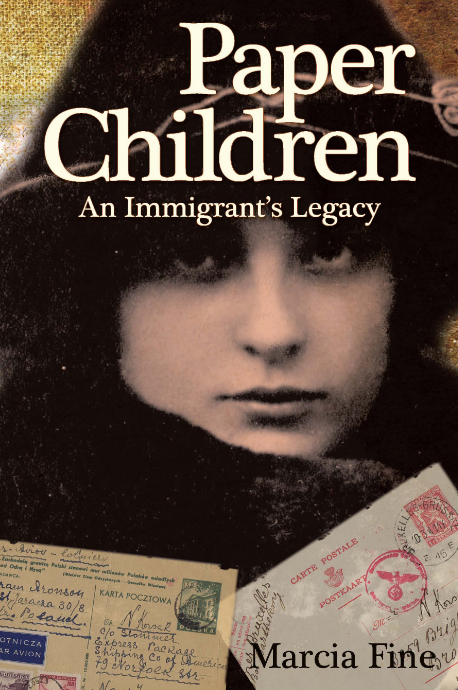
Being Jewish in America can be cultural or religious or both. Fine keeps
us fascinated with how old world religion can dissipate as the immigrant becomes more Americanized. It was exciting reading to learn how this happens and why it can happen.
Fine’s research into her culture, as well as her religioin and the Hebrew language, is a gift to the reader. She visited not only New York and Miami, but Warsaw, Poland where it all began.
Letters written on onion skin that belonged to her grandmother are beautifully constructed into the crux of the story. They’re from her great-grandparents
who wrote them in Polish and Yiddish in a loving and naive way as they
witnessed the Nazi takeover. Fine found the perfect person to translate the letters. They add much to the authenticity of the story.
Fine’s book is good enough to inspire a movie or a Lifetime TV show. Her
attention to detail is incredible and her use of dialogue and storytelling hit
the mark for this reader. She could easily weave the three women’s stories together even more and make a documentary about Jewish aristocracy that so many Americans may not know existed prior to WWII.
There are many visuals of the horrors of war and the beauty of wealth in this family’s dynamics portrayed in the book. They could be readily transferred to the big or small screen because of Fine’s quality descriptions of the characters, events and scenery of the time.
The title becomes clear as we learn of her letters and the importance of their communication to the story. Beautifully written by the great-great
grandparents back in the old country of Poland, and later analyzed by Fine, they’re a cornerstone to the story and differentiate it from the others out there today.
There’s no e-book, this book exists as a solid object; the physical turning of the pages reflect the passing of time, the generations living through decades of their lives. The weight of the book and the paper in your hands is a critical part of the understanding of the strength of the story that needed to be told properly and correctly.
Fine has captured her history and the cultural and religious aspects of her heritage and should be commended even further for her efforts.
